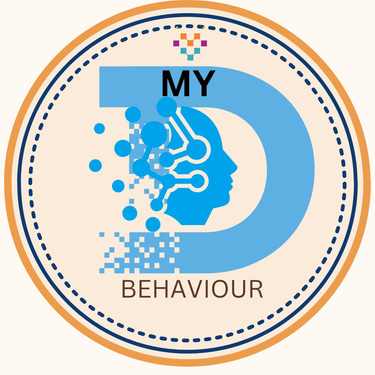Navigating the Chaos: The Impact of Digital Overload on Our Lives
Digital Workspace and Cognitive system part 3
Gajanan L. Bhonde,
7/31/20257 min read


Understanding Digital Overload
Digital overload, also referred to as information overload, is a modern phenomenon characterized by the excessive amount of information and digital stimuli that individuals encounter on a daily basis. In today's hyper-connected world, the continuous influx of notifications, emails, and social media updates creates an environment where managing digital interactions has become increasingly challenging. This relentless stream of information can significantly overwhelm our cognitive capacities, leading to detrimental effects on our mental well-being and productivity.
The sources of digital overload are diverse and pervasive. Social media platforms, for instance, have transformed how we communicate, providing an incessant barrage of messages, status updates, and multimedia content. Users are often compelled to stay engaged, fearing they may miss important information or social interactions. This constant engagement fosters a cycle of distraction, making it difficult to concentrate or engage in meaningful face-to-face conversations.
Additionally, emails have become a staple of professional communication. The expectation to respond promptly to messages adds pressure to manage an overwhelming inbox. The sheer volume of emails can lead to missed communications, further compounding feelings of anxiety and stress. Furthermore, notifications from various applications and devices contribute significantly to digital overload. Each ping or vibration demands attention, exacerbating our compulsion to check devices frequently, thus interrupting our focus and productivity levels.
As we navigate our daily lives, it is crucial to understand how these elements collectively shape our experiences. The impact of digital overload stretches beyond mere inconvenience; it can lead to burnout and decreased satisfaction in both personal and professional realms. Consequently, recognizing the sources and effects of digital overload is the first step towards devising strategies to reclaim control over our digital environments and mitigate its negative implications.
The Consequences of Digital Overload
Digital overload refers to the state of having excess information or interactions through digital devices, leading to significant consequences both personally and professionally. One of the primary outcomes of digital overload is decreased productivity. When individuals are constantly bombarded with notifications, emails, and endless browsing, their ability to focus on tasks diminishes. This lack of concentration can hinder performance, resulting in missed deadlines and subpar work quality.
Moreover, the constant connectivity associated with digital devices can lead to heightened stress levels. With the expectation of immediate responses and availability, individuals may feel pressured to check their devices frequently. This incessant connectivity diminishes their sense of control and can lead to anxiety, as the digital world does not offer a respite from responsibilities. The impact is particularly pronounced in professional environments, where the line between work and personal life becomes increasingly blurred.
Additionally, cognitive fatigue is a significant consequence of digital overload. Engaging with multiple digital platforms simultaneously can overwhelm the brain’s processing capabilities. As a result, individuals may find it challenging to absorb information effectively, leading to memory lapses and reduced decision-making skills. Over time, this cognitive weariness can manifest in both mental and physical health issues, such as difficulty in sleeping, irritability, and compassion fatigue.
In personal life, digital overload can strain relationships, as individuals may prioritize their screens over face-to-face interactions. The lack of meaningful engagement can ultimately result in feelings of isolation, negating the social connectivity that digital devices originally aimed to foster. It is evident that the consequences of digital overload are multifaceted, permeating various aspects of life, underscoring the need for strategies to mitigate its effects.
Cognitive Fatigue: Signs and Symptoms
Cognitive fatigue is a condition that can arise from excessive exposure to digital content, manifesting through various signs and symptoms. One of the primary indicators is a decreased attention span. As individuals are bombarded with information from multiple sources, their ability to focus on a single task diminishes. Tasks that once felt manageable may now seem daunting due to the constant shifting of attention required in a digitally saturated environment.
Another common symptom is difficulty concentrating. This inability to maintain mental focus affects productivity in both personal and professional settings. When distractions are abundant, even the simplest tasks can take significantly longer to complete. This decline in cognitive performance can lead to frustration and disillusionment, further exacerbating the feelings of fatigue.
Memory issues also emerge as a consequence of cognitive fatigue resulting from digital overload. With information constantly flowing in, retaining important details becomes increasingly challenging. Individuals may find themselves struggling to remember appointments, important dates, or relevant information discussed during meetings. This can lead to a greater sense of disorganization, compounding the feeling of being overwhelmed.
Lastly, feelings of burnout are a significant sign of cognitive fatigue. As the pressure to keep up with digital demands mounts, individuals often experience emotional exhaustion. This sense of being mentally drained can lead to a negative spiral, where the lack of motivation further impacts performance and well-being. Recognizing these symptoms is crucial for timely intervention. By acknowledging signs of cognitive fatigue, individuals can take proactive steps to alleviate the burden of digital overload and enhance their overall cognitive well-being.
Strategies for Managing Digital Information Flow
As we navigate the complexities of modern life, the overwhelming influx of digital information can lead to significant stress and cognitive fatigue. Consequently, adopting effective strategies to manage this flow becomes essential. One fundamental approach is employing time management techniques designed to compartmentalize digital interactions. Allocating specific blocks of time for checking emails, social media, or news can minimize constant interruptions, allowing individuals to focus on more demanding tasks without the nagging pull of notifications.
Another vital strategy involves setting clear boundaries regarding digital consumption. This can take the form of implementing "digital detox" periods, during which individuals consciously refrain from engaging with digital devices. Designating times to unplug, particularly during meals or before bedtime, can enhance both mental clarity and overall well-being. Additionally, users should consider curating their digital environments. By unsubscribing from unnecessary newsletters and unfollowing accounts that do not contribute positively to one’s life, individuals can drastically reduce the clutter in their digital space, allowing for a more targeted flow of relevant information.
Furthermore, leveraging technology to streamline information intake is key. Numerous applications are available that can assist in organizing and filtering content based on user preferences. For instance, utilizing news aggregators can minimize the need to visit multiple sites for updates, consolidating information into a single, manageable platform. Similarly, task management apps can prioritize digital tasks, helping users to remain focused on what's crucial, thereby effectively controlling the digital chaos. By applying these strategies, individuals can significantly mitigate the risks associated with digital overload, ensuring a healthier relationship with technology.
The Role of Mindfulness in Combating Digital Overload
In a world increasingly anchored in technology, the phenomenon of digital overload has become a significant concern for many individuals. This overwhelming influx of information can lead to stress, anxiety, and confusion, negatively impacting one’s mental well-being. A useful approach for mitigating these effects is the adoption of mindfulness practices, which can help individuals regain control over their digital interactions. Mindfulness, defined as the practice of maintaining a moment-by-moment awareness of our thoughts, feelings, and surroundings, offers techniques to combat the chaos associated with excessive digital engagement.
One effective technique is meditation, which encourages individuals to focus on their breath and be present in the moment. Regular meditation can help cultivate an awareness that translates into better management of digital distractions. By dedicating even a few minutes each day to this practice, individuals can enhance their ability to concentrate and limit their susceptibility to the compulsive urge to check notifications or scroll through feeds incessantly.
Another important strategy is performing a digital detox, which involves intentionally disconnecting from digital devices for a specified period. This break from technology allows the mind to reset and reduce dependency on constant digital engagement. During this detox phase, people can engage in offline activities like reading, spending time in nature, or practicing creative hobbies, which are essential for maintaining mental clarity and fostering a balanced lifestyle.
Moreover, practicing mindful consumption of information is crucial. This involves discerning the quality and relevance of the content consumed, rather than passively taking in everything available online. By setting boundaries on information sources and prioritizing meaningful content, individuals can engage with digital media purposefully, reducing the feeling of being overwhelmed and enhancing overall well-being.
In conclusion, mindfulness practices serve as vital tools in addressing the challenges posed by digital overload. By integrating techniques such as meditation, digital detox, and mindful consumption into daily routines, individuals can cultivate a healthier relationship with technology, ultimately leading to improved mental clarity and reduced stress.
Creating a Healthy Digital Environment
In today’s fast-paced world, establishing a healthy digital environment has become crucial for maintaining both productivity and well-being. As individuals increasingly immerse themselves in digital platforms, it is essential to find a balance that promotes efficiency without succumbing to digital overload. A well-structured digital environment allows one to manage the influx of information while ensuring a focused approach to tasks.
A key aspect of creating a balanced digital life involves regulating notifications. Constant alerts from emails, social media, and applications can significantly disrupt attention spans and lead to a feeling of being overwhelmed. To combat this, individuals should consider disabling non-essential notifications, allowing for designated times to check messages and updates. This practice not only minimizes distractions but also fosters a centered and deliberate approach to digital interactions.
Prioritizing tasks is another vital element of a healthy digital environment. The abundance of digital tools can lead to multitasking, which often decreases productivity and increases stress. Instead, using techniques such as the Eisenhower Matrix or time-blocking can help individuals categorize tasks based on urgency and importance. By establishing a clear hierarchy of responsibilities, one can focus on high-priority activities, effectively managing time and energy.
Additionally, cultivating a focused workspace is instrumental in enhancing productivity. A designated area free from distractions can encourage deeper concentration during work hours. This may include organizing physical space, limiting clutter, and optimizing ergonomics. Furthermore, incorporating elements that promote tranquility, such as plants or calming colors, can enhance mental clarity and sustain a sense of peace in the digital realm.
By focusing on regulating notifications, prioritizing tasks, and creating a conducive workspace, individuals can construct a healthier digital environment that supports both productivity and well-being.
Conclusion: Embracing Mindful Digital Engagement
As we have explored throughout this blog post, digital overload is an increasingly prevalent issue in our lives. The constant influx of information, notifications, and digital distractions can lead to significant stress, decreased productivity, and impair our overall well-being. Navigating this chaos requires a conscious effort to manage our digital consumption proactively.
One of the key takeaways is the importance of awareness regarding our digital habits. By recognizing the triggers that lead to overconsumption, we can implement strategies to mitigate their effects. This can include designating specific times for checking emails, limiting social media use, or utilizing tools such as digital wellness applications to monitor screen time. Being mindful of how we engage with technology allows us to reclaim our time and attention, ultimately leading to more meaningful interactions, both online and offline.
Additionally, embracing mindful digital engagement encourages us to establish healthier boundaries with our devices. This might involve setting up device-free zones at home, practicing digital detoxes to cleanse our minds, or replacing mindless scrolling with enriching activities like reading or engaging in hobbies. Such practices not only foster a balanced relationship with technology but also enhance our productivity and creativity.
In essence, adopting a mindful approach to our digital use is essential for navigating the chaos of contemporary life. By prioritizing our mental health and making intentional choices about our digital habits, we can foster a more harmonious relationship with technology. Embracing this balance is pivotal for enhancing overall well-being, improving mental clarity, and cultivating deeper connections with those around us. Let us strive for a future where digital engagement is purposeful and enriching rather than overwhelming.
